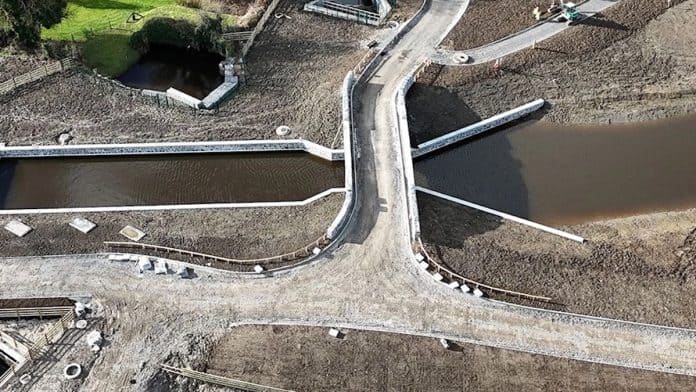Phase two of Ireland’s Ulster Canal restoration between Clonfad and Clones has been officially opened for navigation.
The reopening is in addition to a new major canal basin marina and amenity area in Clones.
The project was delivered by Waterways Ireland and funded by the Shared Island Fund, Department of Rural and Community Development and Department of Housing, Heritage and Local Government at a cost of more than €20m.
The restoration of the canal will provide communities with a new amenity and a new tourism destination with opportunities for new businesses to open and existing businesses to expand.
“Waterways Ireland’s purpose is to be the custodian of the inland navigations and collaborate to reimagine, maintain, develop, and promote them to sustain communities, environment, and heritage,” said John McDonagh, CEO of Waterways Ireland.
“Waterways Ireland aims to build a brighter future where the Ulster Canal plays an inspirational role in the lives of the local community and offers exciting opportunities for local businesses. I would like to thank everyone who has helped us reach this happy juncture – in particular, the Waterways Ireland project team and contractor Jons Engineering.”
Waterways Ireland’s purpose is to be the custodian of the inland navigations.
Work began on the Ulster Canal in 1841 and within the year it was open to commercial traffic.
The navigation combining river and canal was around 93km long, passing through counties Fermanagh, Cavan, Monaghan, Tyrone, and Armagh. The last trading boat using the canal was in 1929 and it closed officially in 1931.
The Ulster Canal redevelopment is being managed by Waterways Ireland and is being carried out in three phases.
Phase one of the project, which aids boat travel between Lough Erne and Castle Saunderson, was completed in 2020.
Phase three, when complete, will link phases one and two, and fully reopen the waterway from Clones to Lough Erne.
The work on Phase two included securing a sustainable water source, a new slipway and marina infrastructure facilitating access to the canal for small craft with mooring capacity in the future for 36 berths, two new access bridges, repairs to an existing masonry arch bridge, flood relief culverts and provision of a new service block facility.




